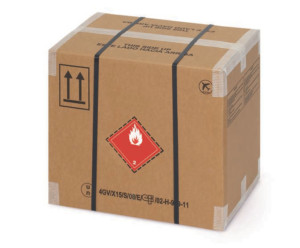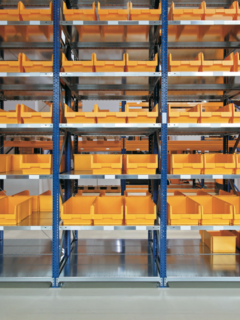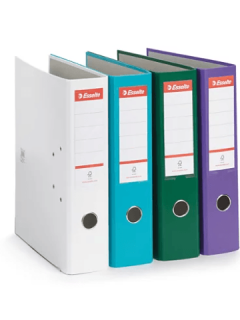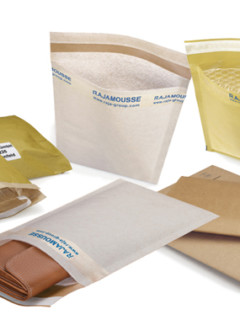In our technically advanced world, many dangerous goods are used and the global trade in them is increasing. According to DEKRA CZ, hundreds of tonnes of dangerous goods are transported in the Czech Republic every year. Based on the recommendations of the United Nations (UN), regulations for the transport of dangerous goods and cargo have been developed. Each mode of transport, road, rail, sea and air, is governed by its own set of rules. The aim of these rules is to ensure maximum safety for all persons involved, to protect the environment, including animals, plants and water, and to protect property. All substances and objects which, in the event of an accident or if improperly handled, pose a risk to the general public and to public order, and endanger human and animal life and health, are classified as hazardous substances. The transport of dangerous goods begins with the filling, packaging, marking of the dangerous goods and ends with the unpacking of the goods at the consignee.
TESTING OF BOXES
Packaging for dangerous goods receives special attention, where, as a rule of thumb, the more dangerous the substance, the safer the packaging. For this reason, packaging for the transport of hazardous substances is tested and certified. The UN has set tests including drop, pressure, stacking or chemical resistance in the test criteria. Below you will find examples of how a drop or stacking test, for example, is carried out.
- Fall test
The more hazardous the goods, the higher the packaging requirements when testing the box. In this testing, the packaging is, among other things, subjected to a drop test from 3 heights. Packaging in a corrugated cardboard box must pass the drop test, which consists of falling on the bottom, lid, sides, front and corner of the box. Within the hazard level, there are 3 packaging groups and levels:
| Danger | Packaging group | Marking Packaging | Fall height during test in m |
| Very hazardous substances | I | X | 1,80 |
| Medium hazardous substances | II | Y | 1,20 |
| Less hazardous substances | III | Z | 0,80 |
Packaging groups are assigned in accordance with the rules for transport by road, rail, sea and air according to the hazard classes:
| Hazard class | Maritime transport | Air transport | Road, rail transport |
| Class 1 | Packing group II (Y) predominates | ||
| Class 2 | In general, special requirements for packaging II (Y) apply | ||
| Class 3 | I, II, III | I, II, III | I, II, III |
| Class 4 | I, II, III | I, II, III | I, II, III |
| Class 5 | I, II, III | I, II, III | I, II, III |
| Class 6.1 | I, II, III | I, II, III | I, II, III |
| Class 6.2 | Special packaging requirements | ||
| Class 7 | Special packaging requirements | ||
| Class 8 | I, II, III | I, II, III | I, II, III |
| Class 9 | II, III | II, III | II, III |
The outer layer of the box must not exceed a certain absorption limit. If adhesives are used to seal the carton, these materials must also be waterproof.
- Stacking test
The complete package shall withstand for 24 hours a load equivalent to a 3 m high stack of identical packages. The results of these tests shall be summarised in a test report which shall form part of the subsequent approval.
MARKING OF DANGEROUS GOODS BOXES
Dangerous goods boxes shall be approved and appropriately marked. Certified packaging shall be provided with UN markings which shall be permanently affixed and visible. Code structure of the tested box:
| Symbol Organics of united nations | Box designationcardboard/corrugated cardboard/special packing | Packaging group | Max. gross weight in kg | Boxes for solids | Year of manufacture of packaging | Country of registration (marking) | Approval office | Approval number | Manufacturer | |
| UN|UN| UN | 4|4| 4 | G|G| GV | / Y|/ X|/ X | 15|60| 77 | / S|/ S|/ S|/ S | / 04|/ 04| / 04 | / D| / A| / A | / BAM| / PA-02| / PA-02 | / 3975|/ 3057| / 5788 | – AN|- AN| – AN |

Certified packaging bears the UN mark – a number that shows exactly what can be transported with it and where it has been tested. Since 1976, the United Nations recommendations for the transport of dangerous goods by rail, road, sea and air have been defined in the so-called “Orange Book” (UN stands for “United Nations”). This numbering must be affixed to the packaging when transporting dangerous goods. In addition, dangerous goods must be marked in such a way that they can be recognised as such. This is done by means of labels and UN numbering. In the so-called Dangerous Goods Regulation Directive, substances are classified into 9 hazard classes and must be packaged accordingly: Dangerous goods are divided into 9 hazard classes:
| Class 1 | Explosive substances and articles containing explosives |
| Class 2 | Compressed, liquefied or dissolved gases under pressure |
| Class 3 | Flammable liquids |
| Class 4 | Flammable solids, spontaneously flammable substances, substances which on contact with water give off flammable gases |
| Class 5 | Oxidising substances and organic peroxides |
| Class 6 | Toxic and infectious substances |
| Class 7 | Radioactive substances |
| Class 8 | Corrosive substances |
| Class 9 | Other hazardous substances and articles not clearly in the classes listed above may be assigned |
All dangerous goods boxes in the Rajapack range comply with the UN regulations and meet the requirements for ADR (road transport), RID (rail transport), IMDG CODE (sea transport) and IATA (air transport). No further verification is required in accordance with the test report and certification requirements as per 4GV/4DV approval.














